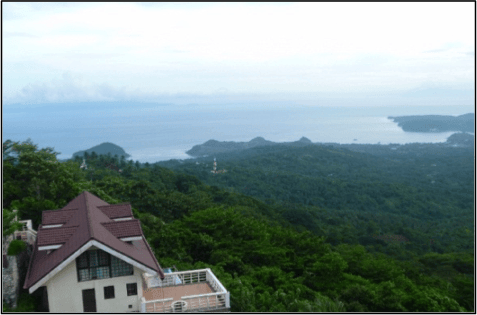Puerto Galera based WBCP member Peter Stevens writes about the hows and wheres of raptor watching and why every birdwatcher should try raptor watching.
space
Raptor Watching
by Peter Stevens
When I was asked me to write an article for eBON about the joys of raptor watching, the following general headings were suggested:
- What you find interesting about raptor watching. Many birdwatchers have never gone raptor watching. What is fun or interesting or exciting about it.
- How you got started
- How you go about figuring out where and when to go raptor watching. Things like what websites you follow or read and weather or seasonal cues you look out for. Also, why you think Ponderosa is a good site.
- Your tips for watching and counting.
- Your observations, analysis, and insights on raptor migration.
The first thing I did was to go raptor watching at my favourite site and sit and ponder these points. Then I scrolled though all past editions of eBon to see what has already been written on the subject to make sure that I wasn’t covering old ground, and then had a couple of beers, which seems to be a common thread amongst most members of the society, and raptor watchers in particular. After all, one is normally sitting on top of a hill to which you have driven with a coolbox full of delicacies and cold beer (maybe a bottle of wine or two) with nothing to do in between flocks of tiny black specks over some distant ridge. No leeches, bugs, stream-wading or annoying little brown jobs. If you’re really lucky there’s even some shelter from the elements for a quiet doze after emptying the coolbox. Lying on your back looking skywards counts as raptor watching as long as you have at least one eye open. The picture shows an example of one of my favourite positions but it’s hard on the arms. Some sort of support would be useful, or maybe a binocular frame so that I don’t need my arms for anything other than holding a cold can.
How did I get started?
My first experience of hard-core raptor watching, i.e. going out to a known site with the specific aim of counting migrating birds, was in San Francisco, with the Golden Gate Raptor Observatory (GGRO). Like us, they have a Fall migration of birds travelling down the coast, heading south. From August 20th to December 9th for the past 30 years groups of volunteers and experts have sat on top of Hawk Hill on the Marin side of the bridge and counted migrating bird every day from 0930-1530. EVERY DAY! They have developed an efficient and repeatable method of counting and recording involving quadrants and teams. Casual volunteers sign up to commit to one full day a fortnight. Some folks have been doing it for years. I only spent a few days up there with them and was impressed and amazed at their expertise in not only identifying the species from the 19 that pass by, but also being able to tell at a distance whether it’s male, female or juvenile.
My other favourite raptor experience was 19 species on one morning, driving through Namibia, without getting out of the car! Awesome.
Where and when to go watching?
The ‘when’ is easy. All migrations follow a pretty well-defined schedule and track. As we know in the Philippines, September, October, March, April and May are our peak times. The ‘where’ is less clear as we have so many hilly islands and possibilities that are, as yet, unexplored. Our time and resources are limited, the distances daunting and habitat disappearing fast. Habitat is important because although migrating, they generally roost at night. No trees, no roost. The East Asian Ocean Flyway is a relatively new revelation. In 2007 it was found that around 250,000 migrant raptors passed over Sangihe Island in September and October, heading south to Indonesia. Sangihe is only 200km due south of the bottom tip of Mindanao. In contrast, the GGRO records only 23000 in a season.
Why go raptor watching
This is why raptor watching is so important and exciting here. Every bird we see, every new site we find, is adding to the overall knowledge of the migration. It’s cutting-edge birding. It’s filling in that Black Hole. We should make it a priority over the next few years. Who do we know in Semirara, Siargo, Catanduanes or Davao in the east? Coron and Puerto Princessa in the west? Mindoro seems to be on the track too. This migration I saw 125 CGs and 182 GFB’s in a few trips to my local site. Not huge numbers, and hard work generally, but important knowledge. That’s what’s fun and interesting about it. Alex and Marts covered the migration routes and other possible sites in their excellent article in the March edition of Ebon (Raptor Watching in the Philippines: An Overview, eBON March 2012 ).
Useful websites
As for websites, the key one for us is the Taiwan observatory for the Fall migration. They start on 9/1 thru to 10/31, from 0530-1230 every day, and have the daily count on their website on the same afternoon. Birds leaving there should arrive here (Central Luzon) within a couple of days. There is no equivalent (as far as I know) for the reverse migration from Indonesia to here, except the same site has figures for arrival in Taiwan, by which time, of course, we’ve missed them. By analyzing past statistics we should be able to fairly accurately anticipate the spring passage.
Tips for watching and counting
Jon Villasper has already given great advice on how to quickly identify the main 5 species likely to be encountered here on migration. (Guide to Raptor ID, eBON Sept 2011). Early on in his piece he says:
‘The trick to identifying migratory raptors is to know what to expect and to read up on them before the trip.’
I couldn’t give better advice. It also applies to every birding trip you make. Prepare, prepare, prepare. Knowing what it is NOT is as important as knowing what it might be. The Oriental Bird Club and our own excellent site have loads of good pictures of raptors from various angles.
My personal mental checklist is, first, size (sometimes difficult from a distance); if small/medium, then wing shape – Accipiter or Falcon?; if bigger, then wing shape and angle they’re held at. Oriental Honey Buzzards have a marked secondary bulge, pale patches at the base of the primaries and a slightly ‘hunched back’ profile. Serpent Eagles on the other hand always hold their wings in an inverted ‘V’ (dihedral) which is obvious from miles away. Grey-faced Buzzards (GFB) have longer, slimmer wings, unless thermalling when they spread their primaries and tails and can look very similar to Chinese Goshawks from a distance. Our Hawk Eagles (Philippines and Changeable) are difficult and require more attention. (see OBC FORKTAIL 14). However, as they don’t migrate, I can safely ignore them. Finally, context. As Jon says, you probably won’t be seeing GFB’s in the sky in late April or early September, or a flock of 30 Peregrine Falcons thermalling above you.
How to count?
Unfortunately I’ve not seen huge, uncountable numbers passing through and have been able to count individuals. If I was lucky enough to have this problem, I’d use the wader-watcher method of counting 10 or 20 birds quickly, and multiplying the area that they occupy over the whole flock. Somewhat rough and ready but fairly accurate.
What makes a good site and why the Ponderosa?
Obviously clear 360 degree views would be ideal. In this respect the Ponderosa Golf Course is good in that it sits on a ridge than runs from south to north from the coast to the hills behind, where there is a steep ridge than runs west to east, which is normally topped in cloud. Birds lose height on the sea crossing from Batangas to the north, and generally arrive at or below eye-level. They then use the coastal plain and the club ridge to gain height and cruise along the ridge behind, below cloud level, either heading east or west, depending (it seems) on the weather. A newly constructed (but not used) zip-line tower gives excellent all round views and is only 2 minutes from the restaurent and bar, which is another major consideration when choosing a site. Never forget, any fool can raptor watch sober.
So that’s it, a few personal thoughts on what I find interesting about raptor watching, how I got started, what makes it important, fun and exciting, where and when to do it, why my favourite spot is so good and a few basic tips on i.d. and counting.




Pingback:NOVEMBER 2012 | e-BON